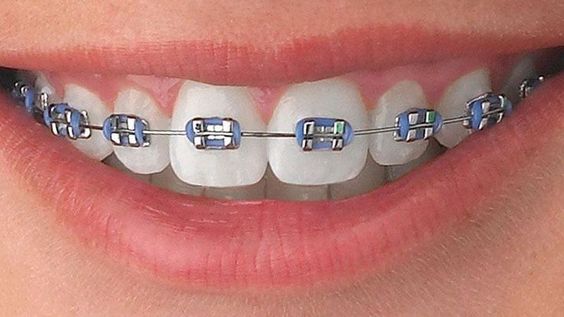Braces have become a popular solution for achieving a straighter smile and improving overall dental health. With advancements in orthodontic technology, braces are no longer just a cosmetic option but are essential for correcting various dental issues. Understanding the most common problems treated with braces can help patients make informed decisions about their orthodontic care. This article will explore these issues, Dental Braces Cost In Dubai, and the benefits of seeking treatment.
Understanding Orthodontic Issues
Orthodontic problems can arise from a variety of factors, including genetics, early loss of baby teeth, or thumb-sucking habits. These issues can lead to misalignment of teeth, improper bites, and difficulties in oral hygiene. Addressing these concerns with braces can significantly improve both functionality and aesthetics.
1. Crowded Teeth
Crowded teeth are one of the most common issues treated with braces. When there is insufficient space in the jaw for all the teeth to align properly, it can lead to overlapping or twisted teeth. Crowded teeth can cause difficulties in cleaning and can increase the risk of cavities and gum disease. Braces work by gradually shifting the teeth into their correct positions, creating a more orderly and functional arrangement.
2. Gaps Between Teeth
Conversely, some patients may have excessive spacing between their teeth, which can lead to a variety of aesthetic concerns. Gaps can result from missing teeth or abnormal jaw growth. Braces can help close these spaces, improving the overall appearance of the smile while ensuring that the teeth are evenly spaced for better function and hygiene.
3. Overbite
An overbite occurs when the upper front teeth significantly overlap the lower front teeth. This condition can result from genetic factors or habits such as thumb sucking or prolonged bottle use. An untreated overbite can lead to discomfort, difficulty chewing, and excessive wear on the teeth. Braces can effectively correct overbites by realigning the teeth and improving jaw position.
4. Underbite
An underbite is the opposite of an overbite, where the lower teeth protrude beyond the upper teeth. This misalignment can result in difficulties with chewing, speech issues, and jaw pain. Underbites are often more severe than overbites and may require braces combined with other orthodontic appliances or surgical intervention for complete correction. Early treatment can help prevent more complex procedures later on.
5. Crossbite
A crossbite occurs when some upper teeth sit behind lower teeth when the mouth is closed. This can happen with individual teeth or a group of teeth and can affect both the front and back of the mouth. Crossbites can lead to uneven wear on teeth, jaw strain, and even facial asymmetry. Braces are a common solution for correcting crossbites, helping to realign the teeth and restore proper function.
6. Open Bite
An open bite is characterized by a gap between the upper and lower teeth when the mouth is closed. This can occur due to prolonged thumb sucking or tongue thrusting. An open bite can make it difficult to bite into foods and can also impact speech. Braces can be used to bring the upper and lower teeth together, correcting the open bite and restoring proper function.
7. Protruding Teeth
Protruding teeth, often seen in the upper arch, can be the result of genetics or improper jaw alignment. Teeth that stick out are more prone to injury and can affect a person's smile and overall appearance. Braces can help retract protruding teeth, bringing them back into alignment with the rest of the smile for improved aesthetics and safety.
8. Misaligned Jaw
Sometimes, the issue may not solely be with the teeth but rather with the jaw itself. Misaligned jaws can lead to significant dental problems, including uneven tooth wear and difficulty in biting or chewing. Orthodontists can assess jaw alignment and recommend braces, often in combination with other treatments, to correct the issue. Proper alignment can improve both function and comfort.
Types of Braces Available
Several types of braces can be used to treat these common problems:
- Metal Braces: The most traditional form, made from stainless steel, they are highly effective for a variety of orthodontic issues.
- Ceramic Braces: These are similar to metal braces but are made from clear or tooth-colored materials, making them less noticeable.
- Lingual Braces: Placed on the back of the teeth, these braces are invisible from the front and are ideal for patients seeking discretion.
- Invisalign: A series of clear, removable aligners that gradually shift teeth into place. Invisalign is suitable for many orthodontic issues but may not be effective for complex cases.
Benefits of Seeking Orthodontic Treatment
Treating orthodontic problems with braces offers numerous benefits:
- Improved Oral Health: Correctly aligned teeth are easier to clean, reducing the risk of cavities and gum disease.
- Enhanced Aesthetics: A straight smile can boost confidence and improve self-esteem.
- Better Functionality: Properly aligned teeth improve biting, chewing, and speaking, enhancing overall oral function.
- Long-Term Cost Savings: Addressing orthodontic issues early can prevent more severe dental problems in the future, saving money on extensive treatments.
Conclusion
Braces are a valuable tool for treating a wide range of orthodontic problems, from crowded teeth and gaps to overbites and misaligned jaws. Seeking early orthodontic care can lead to significant improvements in oral health, aesthetics, and overall quality of life. If you or a loved one is experiencing any of these common issues, consult with a qualified orthodontist to explore the best treatment options available. Investing in braces is investing in a healthier, more confident smile for the future.





Comments